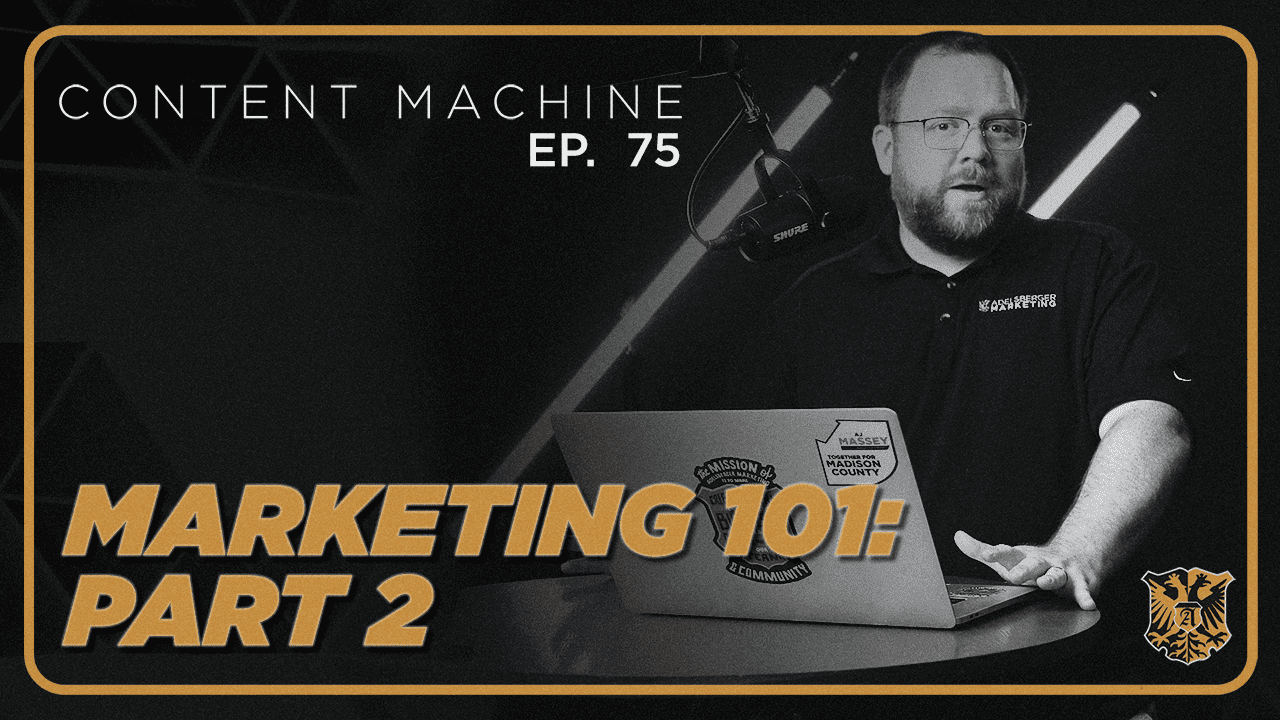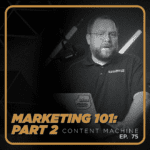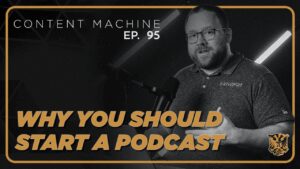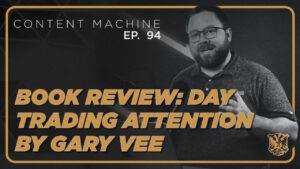
Welcome back to the content machine podcast. We are in the second episode of our series on fundamentals in marketing. Last time we talked about understanding who you are as a company before you get into marketing. Now let’s talk about who your customers are and understanding them.
So do you know who your customers are? And no, everyone is not your customer. We talk to businesses all the time that want to say that everybody is their customer and they fail to focus in on one set of people, which puts them at a competitive disadvantage for going to the marketplace because it’s difficult to communicate everybody’s need to everyone. We like to encourage businesses to focus in on one particular group of people. Now that could be everybody in your geographic vicinity, sure, but maybe it’s a certain age, demographic, or a gender or stage of life or a level of education.
The big thing is, what is the problem that you’re trying to solve? Not everybody has the same set of problems. Problems. So why would they care that your business exists? What problem are you solving for them?
And then why do they pick you? Is it because of convenience that you’re the closest one or the fastest one to deliver that service? Is it location? They know that you’re in their area and that you can you support their community? Is it part of their mission for like, Tom’s shoes?
Everybody was crazy about Tom’s shoes for a while because they would donate a pair of shoes for everyone that someone bought. Like that mission motivated people to do business with them. Is there a relationship involved? Do they have a parasocial relationship with the company or do they actually know the people that they’re buying from? And then are you simply the best option for this person?
Tell you about our customers. We have small businesses that have less than 50 people and no marketing leadership on staff. We provide a certain set of services for that size of company and then you go up to like medium small businesses, 50 to 500, with maybe marketing leadership that maybe need additional service that they don’t have in house or some guidance. And then we have big businesses that maybe need one specific service from us, that they have marketing leadership. They’ve got other marketing things, but they need maybe just like a video for like Kellogg’s here in Jackson.
So we think about those customer segments and then design our offerings around what would help them the most. The next thing to think about is inbound versus outbound. We talked about this on a previous episode, definitionally. But what does that mean in practicality? Inbound marketing is what I call being ready to be found.
Are you in a position to be found by potential customers. And when they do find you, are you set up in a way that makes them aware that you are the company they want to do business with? Do you have the appropriate marketing materials and information to help convert a lead into a customer? You really need to have inbound marketing, correct? Before you start doing outbound marketing or you’re wasting money because outbound marketing is paid marketing to help you draw attention to your business.
If your business is not ready to have attention drawn to it, spending money to do so is a bad idea. Billboards, social ads, sponsorships, anything you do in a paid way to get attention turned your way. Now, a couple other things we’re gonna do kind of a lightning round here and talk about some fundamentals of marketing for business. Your visual brand, your logo, the look and feel of your business. It should be consistent in all the places that it’s used.
Your website, social media, business cards, print, all those things. You should also have a few different variations of the logo. An all white and all black, a full color, a one color version. You should have all those as part of any professional marketing package. And you should use those ones appropriately so that they look good and are legible on the platform that they’re being used.
Every business should have a one liner. Part of the messaging, branding that helps convey who has the problem that you’re solving. How do you solve their problem? We wrote a one liner for a business that we’re friends with. That’s they’re an HR staffing company and we phrased the problem that they were solving as we turn human resources into human capital.
Nobody likes human resources, not that I’ve ever met. But human capital has a much nicer ring to it and helps paint a picture of the problem that we’re solving for companies. For us, we say we lead businesses to conquer digital marketing. We work with businesses. A lot of times we hear from people that marketing is confusing.
They don’t know where to start. Digital marketing is vast and they’re not sure where to start. And so we lead them to conquer that and also goes with our branding of that fierce sort of wording story. Brand is a great book that has some great information on one liners. The next thing, websites, your website, you need to think about who is it for?
Is it for you or is it for your customer? So think about it from the eyes of your customer. What information are they looking for? Are you answering their questions or just talking about what you want to talk about? Think about what your customer needs to find out.
When they come to your website. Is your website easily navigable? Can you find what you need quickly? You know, I think it’s crazy that we visit a church website and you can’t find the times of the service or where it’s at quickly. That should be the first.
One of the first things that you see is leadership information on the website. Can you figure out who’s in charge of the place or who do you need to get started with? If you’re trying to buy something, hiding those things I think is a bad move. Is your visual branding being used well on the website and then avoid stock photos. Stock photos, especially in a local business, hurt the trust you’re trying to develop with customers.
Additionally, you should be active on social media. It crosses between inbound and outbound, but you should be careful on which ones you’re active on. Some of them are not worth your time. So where are your customers attention? Are you doing business to business?
Are you business to consumer? How often should you post? Well, as much as you can make interesting content. Just posting to post is not a good idea. But posting interesting content is a great way.
Gary Vaynerchuk phrased it this way. Jab, jab, jab. Right hook. You provide value. You provide value and provide value.
And then you hit them with the sales message. Giving behind the scenes is really helpful. Giving something interesting. Helping people see the value in what you’re talking about is really helpful. And then finally, the last kind of lightning round we’ll hit here is Google my business.
Are you business to consumer? How often should you post? Well, as much as you can make interesting content. Just posting to post is not a good idea. But posting interesting content is a great way.
Gary Vaynerchuk phrased it this way. Jab, jab, jab. Right hook. You provide value. You provide value and provide value.
And then you hit them with the sales message. Giving behind the scenes is really helpful. Giving something interesting. Helping people see the value in what you’re talking about is really helpful. And then finally, the last kind of lightning round we’ll hit here is Google my business.





